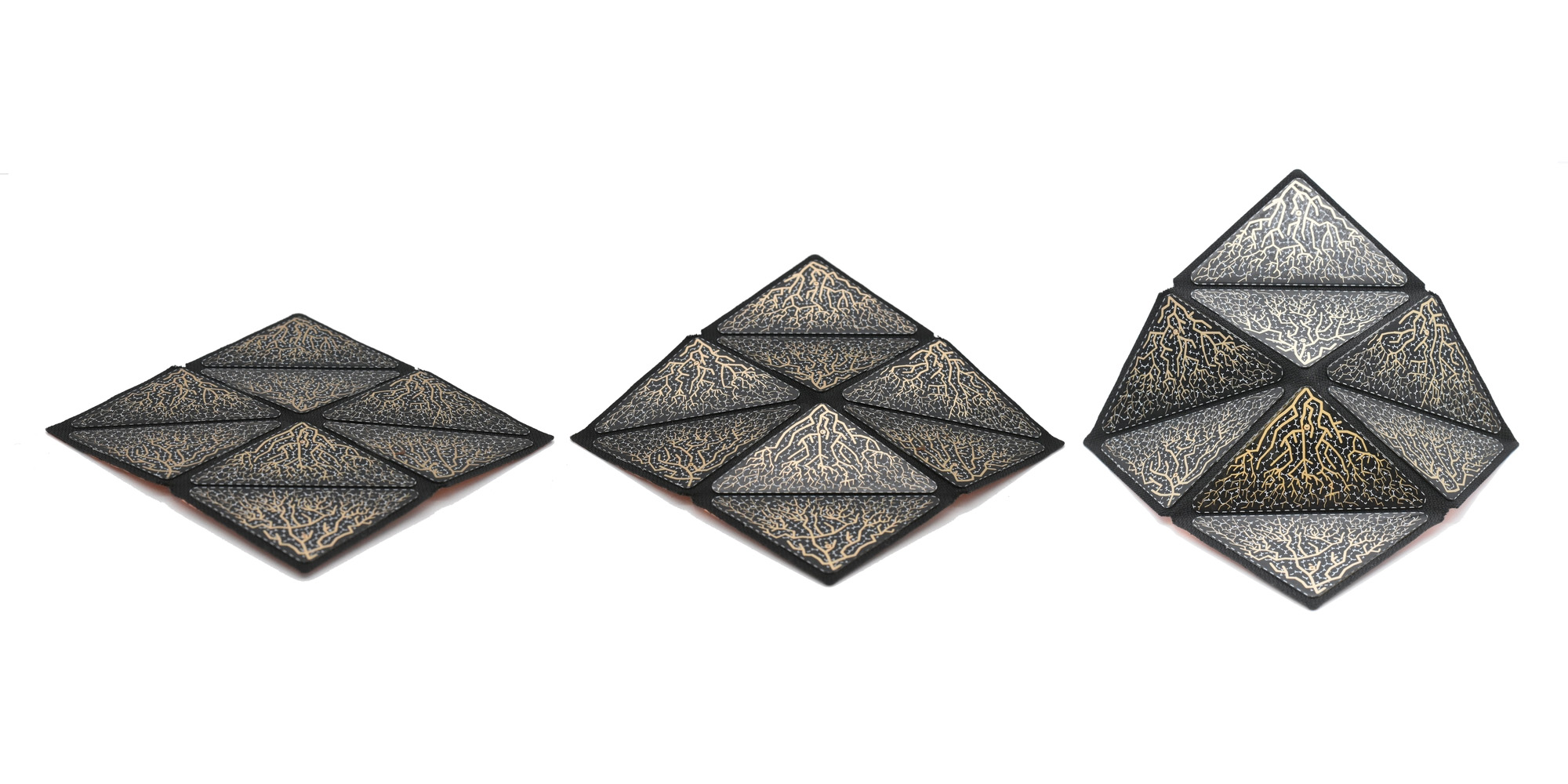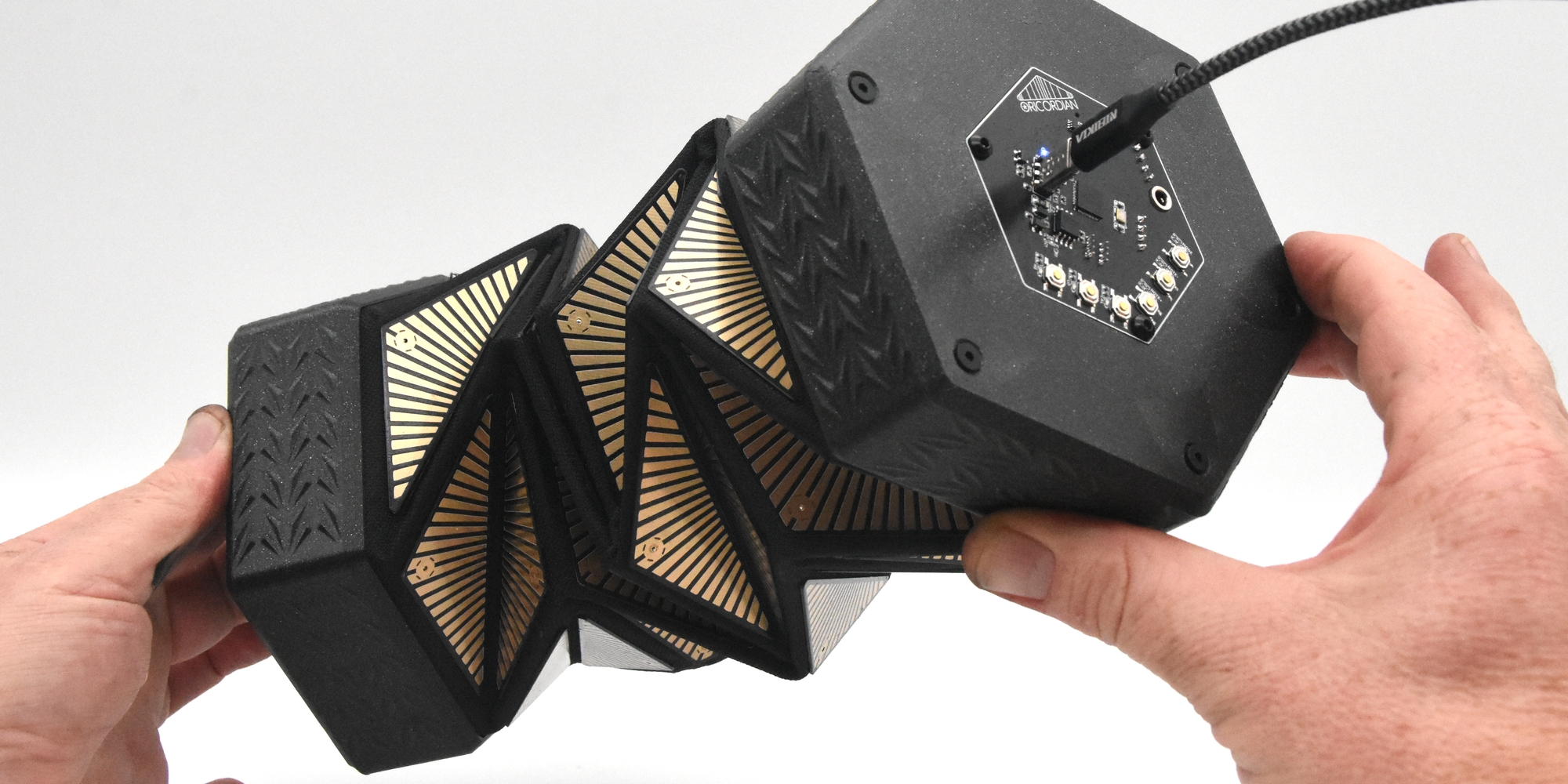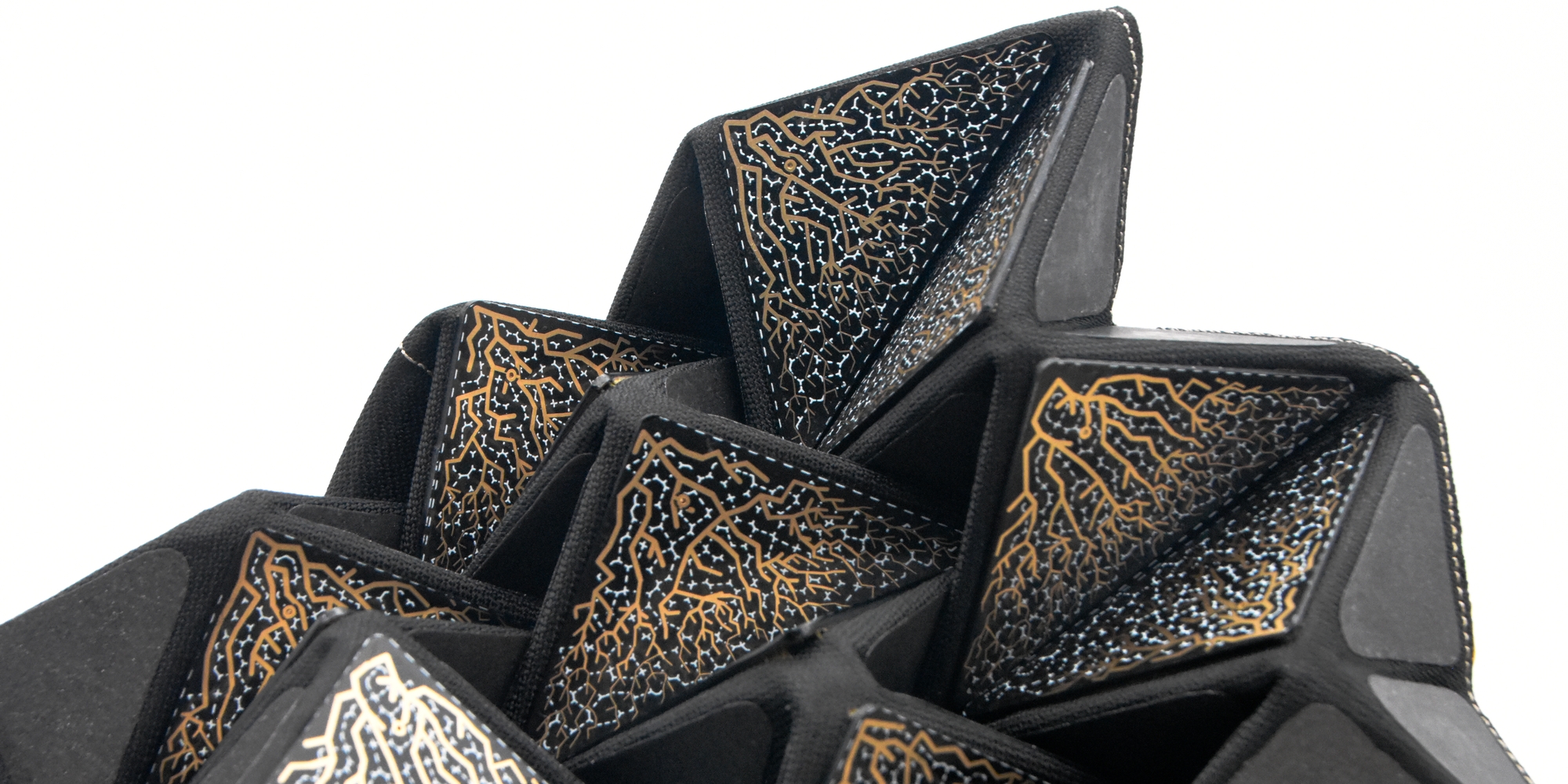Our question for this work, What happens to our experience of space when we fold sound? is situated in our research into fundamental artistic methods for origami and robotics, following our central theme of Fold Sensing.
Our conceptual approach is to invent foldable musical spaces rather than linear musical scores. The performer can explore the musical volume using choreographed folding paths and geometric gestures. Our themes express ideas of natural folding. Collapse and Crumpling: where the multiplicity of simultaneous folds feels chaotic, intense and mechanistic. Force + Geometry: leans towards the spatial, sparse, and harmonies of synthetic sound.
Technically, the instruments are layered electronics and textiles. The main elements are a capacitive sensor array from printed circuit board electrodes crafted as kinetic origami structures. The fold angles are captured in real-time and conveyed through a normalisation algorithm that adjusts for the non-linear capacitive response to the fold angle. These parametrised folded structures offer new affordances to interact, play and perform by contracting and expanding the fold geometry.
Our experimental results show new expressive possibilities of folding and insights into fold gestures. We envision oribotic instruments as a form of robotic sculpture, where the program of folded geometry constrains the human-hand movements, and as a form of spatialised musical expression.
This project was part of the Open Futurelab at the Ars Electronica Festival 2023.
Credits
Ars Electronica Futurelab: Alexandre Bizri, Chiara Croci, Matthew Gardiner, Anna Weiss, Erwin Reitböck, Simon Schmid
Partners:
This project is funded through the FWF Austrian Science Fund, PEEK Program.
Studio Matthew Gardiner https://orilab.art




